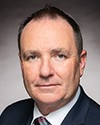I believe so, yes. I believe the question is, if there's so much data being collected, why don't we understand the causes of some of the issues that people are experiencing, specific to suicide?
I can't comment specifically on suicide. It isn't data that I've looked into myself, but in general—I'll elaborate on a point that I made earlier—most of the studies that are being done tend to trend in the direction of examining things like correlates, prevalence, rates of certain things and differences between men and women, if we're thinking specifically of women veterans. That data tends to be population-level data that uses dichotomized or categorical variables, so it asks if something is this way or that way.
Many of the studies that we have available in Canada don't ask questions about explanatory factors. For example, if I'm thinking about questions asked about MST in the life after service survey—just because I was looking this up recently—the line of questioning is this: Did a certain event happen, and under what circumstances did it happen? There isn't a line of questioning about the quality of support that somebody may or may not have received.
It's difficult for us to make any kind of assessment or conclusion about how to support people and improve programs and services, for example, if we're not asking that question.





